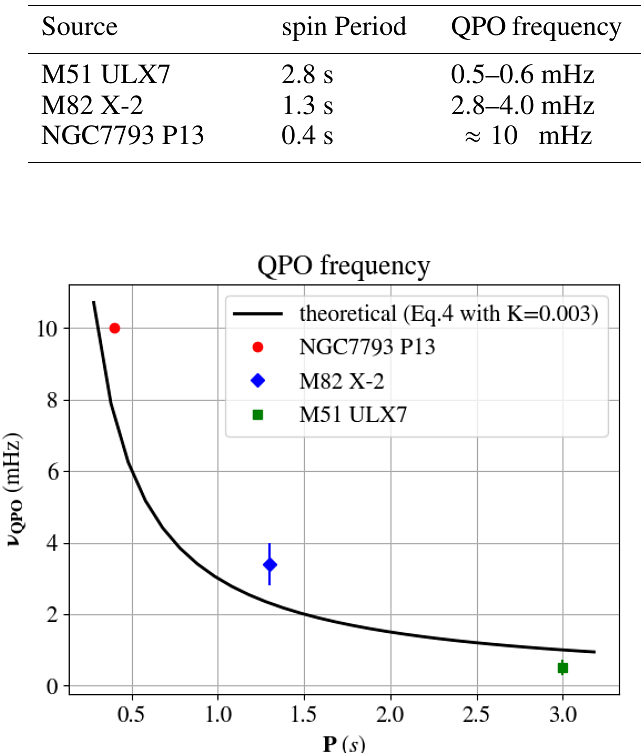Magnetic precession as a model for QPOs in PULXs: flat-top noise ULXs are different

Magnetic precession as a model for QPOs in PULXs: flat-top noise ULXs are different
Miljenko Čemeljić, Włodek Kluźniak, Sukalpa Kundu
AbstractContext. Several instances of low frequency Quasi-Periodic Oscillations (QPOs) have been reported in ultraluminous X-ray sources (ULXs), including three in pulsating ones (PULXs) to date. The nature of many ULXs is still unclear, as are the detailed properties of accretion in PULXs. Aims. We seek an answer to questions such as: Is there a QPO model that fits the data? Can mHz QPOs be used to constrain the magnetic field and accretion rate of the neutron stars in PULXs? Are all the low frequency QPOs in ULXs a manifestation of the same phenomenon? Methods. We apply Dong Lai's precession model to the PULX data, with the magnetic threading of the accretion disk constrained by recent simulations. Results. Based on the magnetic precession model, and on recent progress in understanding the inner structure of accretion disks, we predict an inverse scaling of QPO frequency with the neutron star period in PULXs. The theoretical curve is largely independent of the stellar magnetic field or mass accretion rate and agrees with the data for the known QPOs in PULXs. The flat-top QPOs detected in ULXs have observational properties that seem to be very different from the QPOs detected in PULXs, indicating they might have a different origin.